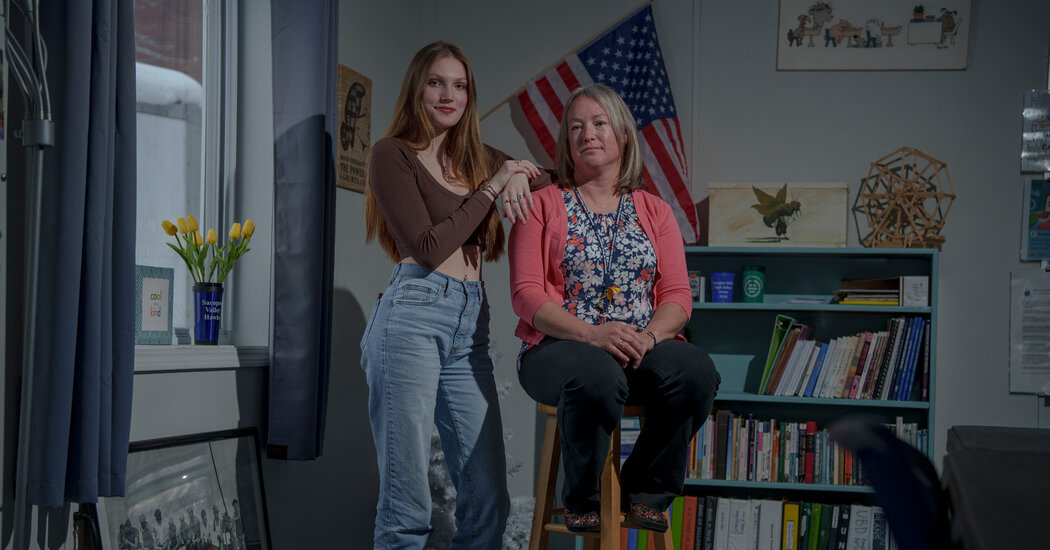
Last October, to commemorate Mental Health Awareness Week, a group of students at Sacopee Valley High School in Hiram, Maine, created the annual Hope Board. Shaped like an enormous tulip and displayed in the lobby, the board was covered with anonymous teenage aspirations. Some students hoped to pass driver’s education or have a successful playoff season. Others expressed more complicated desires. “To be more happy than angry,” wrote one student. Another wrote, “I hope people are kinder and more mature.”
Camryn Baron, 17, created the board as a founder of Sacopee’s Yellow Tulip Team, a student group devoted to mental health. “It’s an outlet for some kids to be able to outwardly express and vocalize something that’s bothering them,” she said.
Ms. Baron has struggled with an eating disorder, anxiety and depression; she is bisexual and has not always felt supported. “The things that a lot of us dismiss or struggle with here — to be able to share them with other people is validating,” she said.
Sacopee’s Yellow Tulip Team is one of roughly 150 such clubs supported by the Yellow Tulip Project, a mental health education and advocacy nonprofit. Co-founded in 2016 by Julia Hansen, a high schooler in Maine who had lost her two best friends to suicide, the nonprofit works to destigmatize mental illness and help students prioritize their emotional well-being.
At Sacopee Valley, the club plays upbeat music to welcome students each Monday and shares mental health information through morning announcements. Each fall, it plants a Hope Garden — 500 tulip bulbs this year — and will celebrate the flowers’ resilience in the spring with a youth wellness day of workshops and activities. At the group’s regular meetings, students might discuss stress reduction strategies, as well as the homophobia, socio-economic inequality and various stigma that many teenagers experience in their conservative-leaning, rural community.
In recent years, nonprofits that support school-based mental health clubs have found their programs in demand. The increase is the result of two phenomena: the rising number of adolescents struggling with mental health and the dearth of resources to help them. As schools search for solutions, often it’s the students who are leading the effort.
